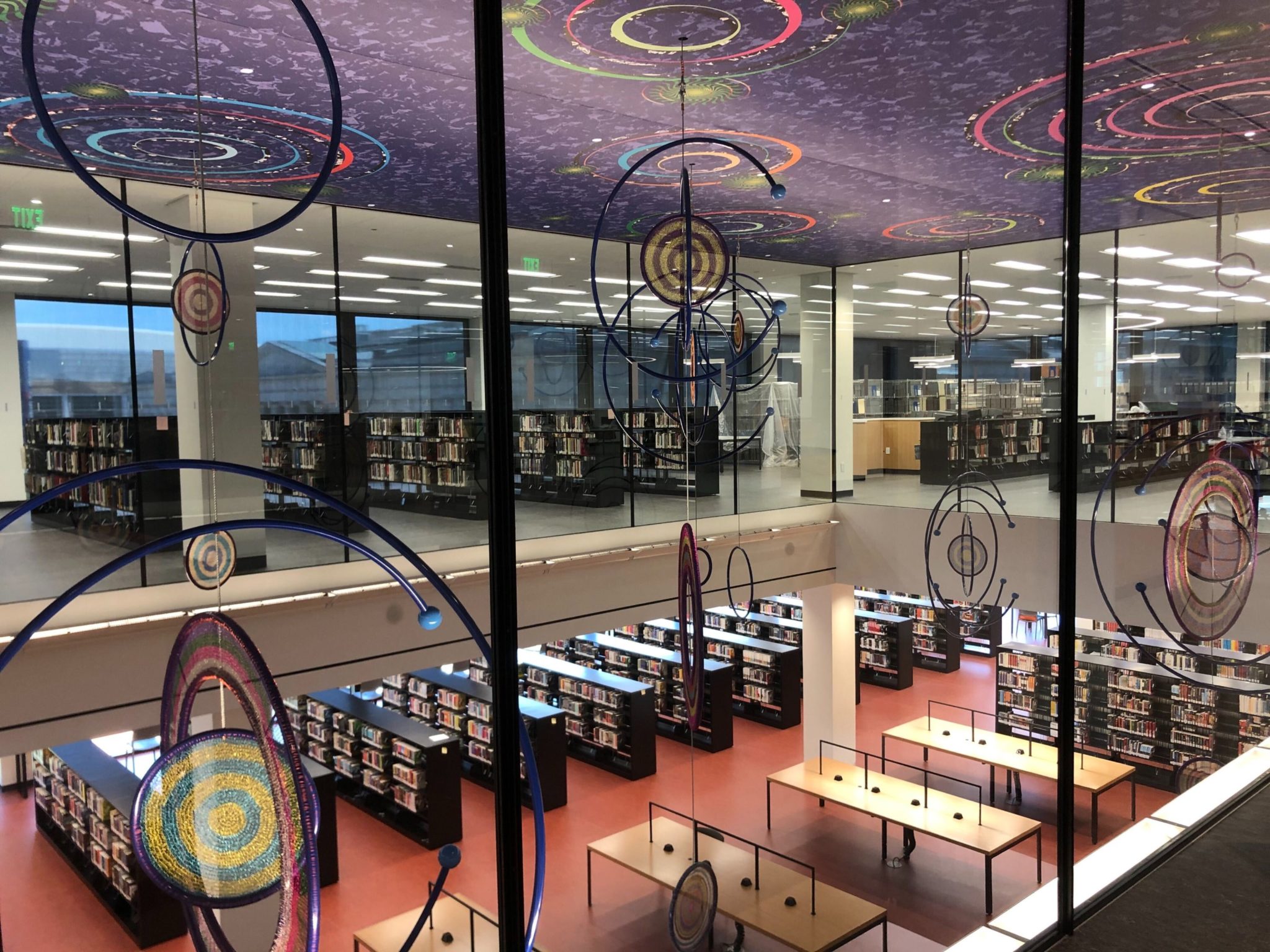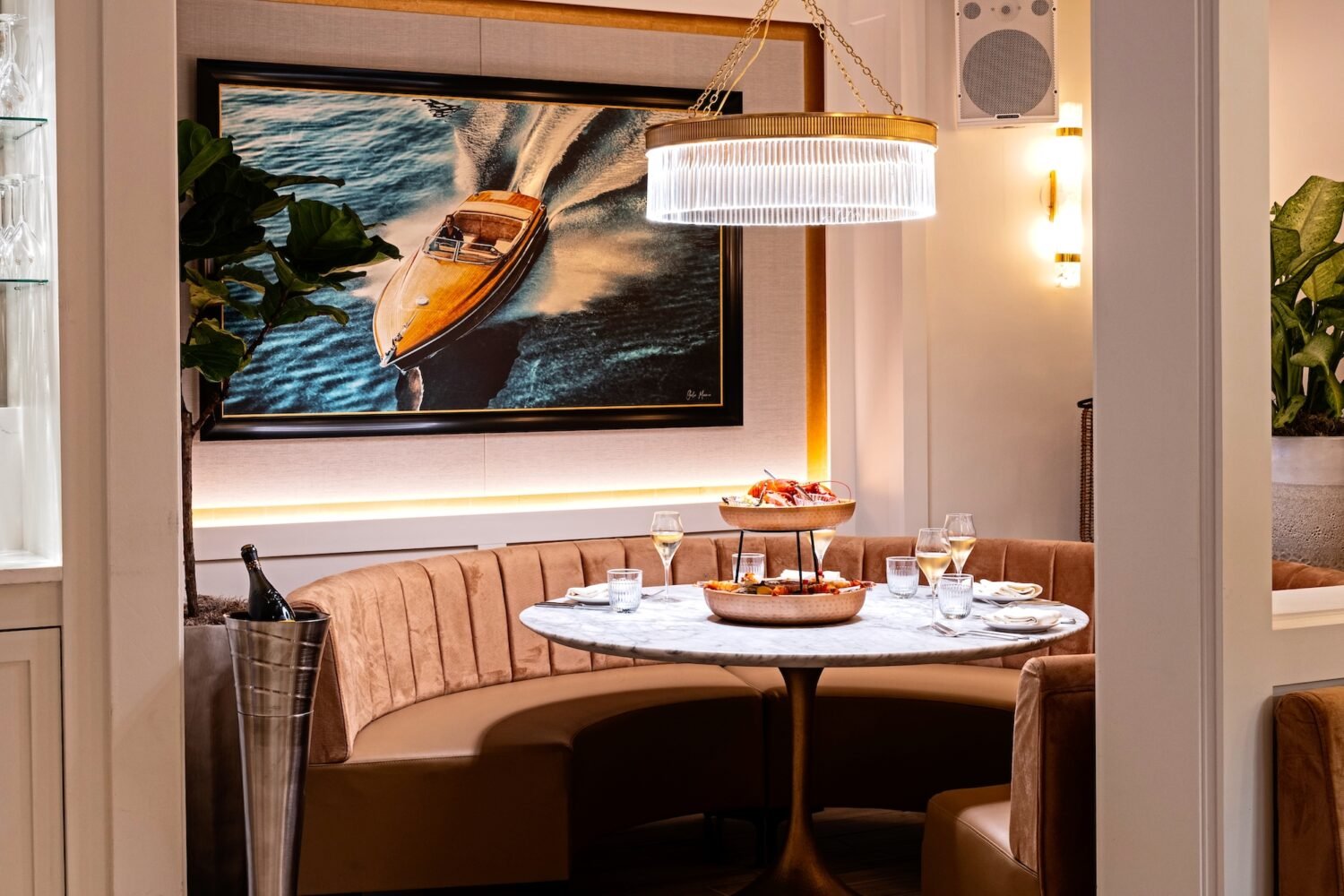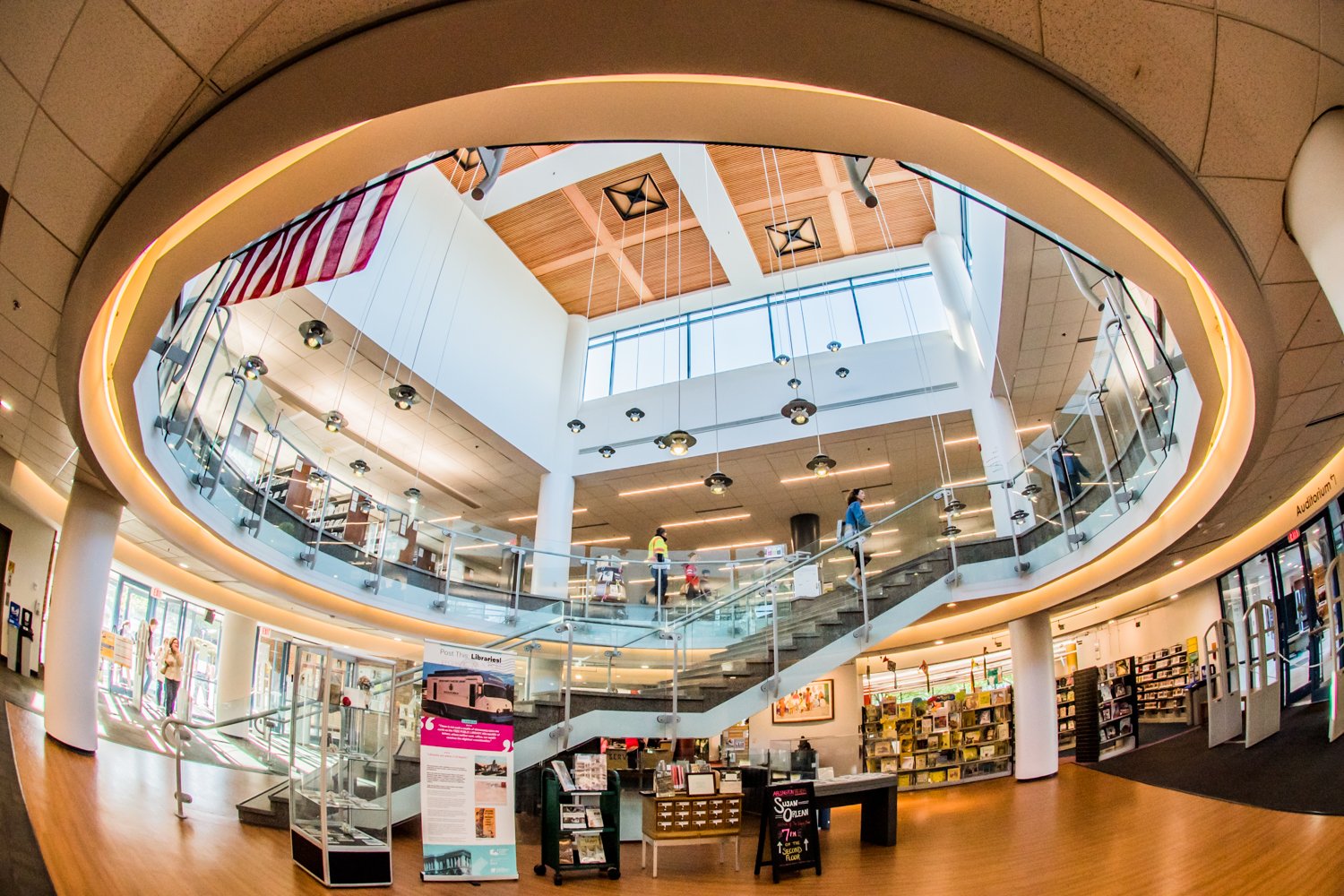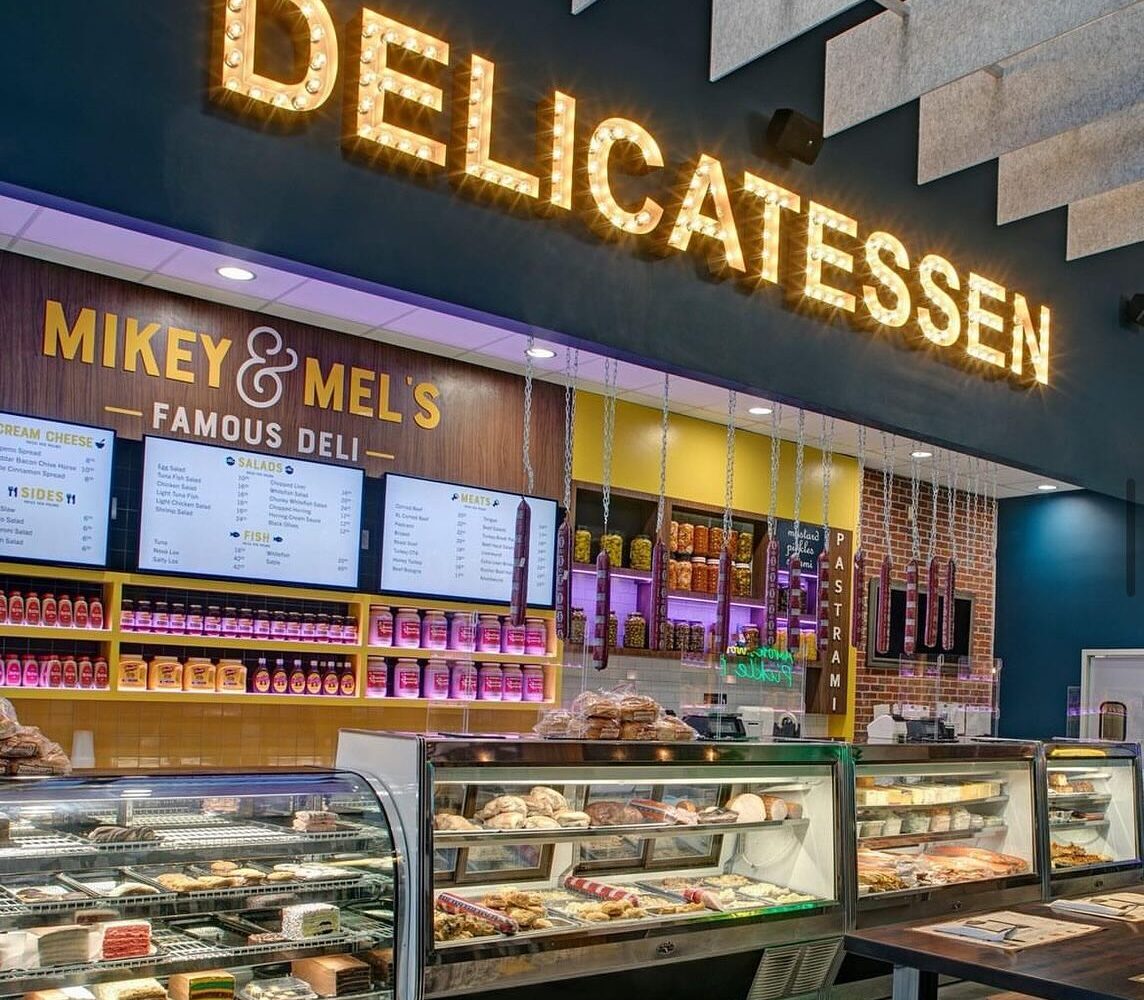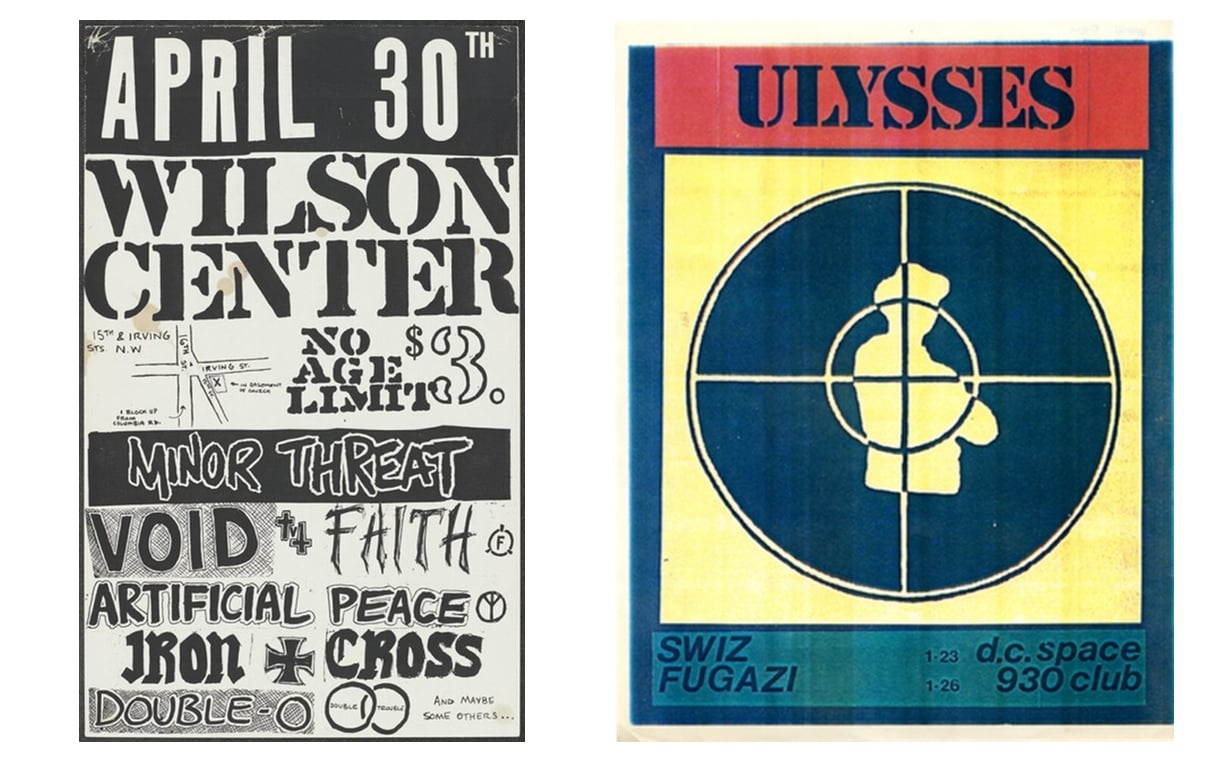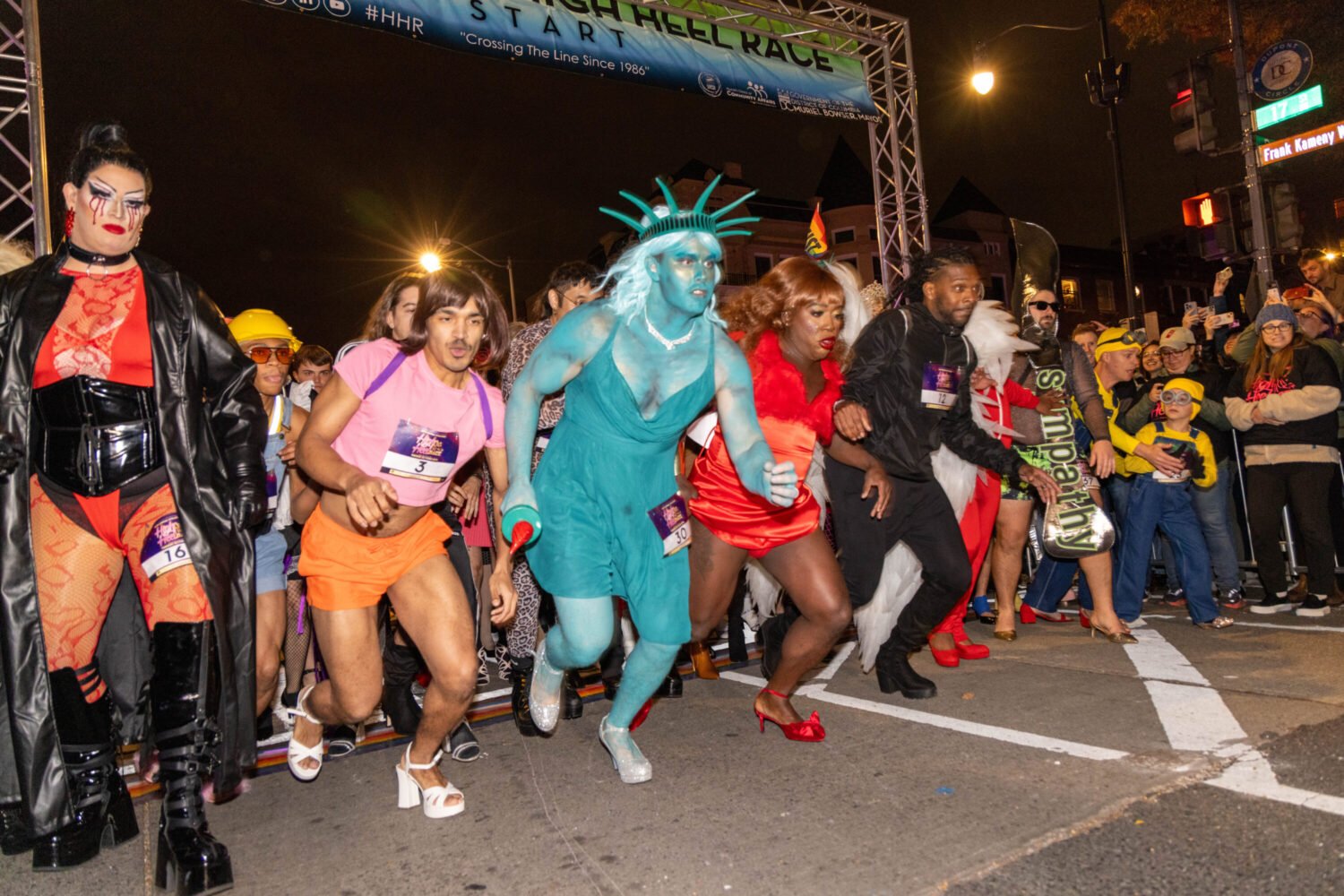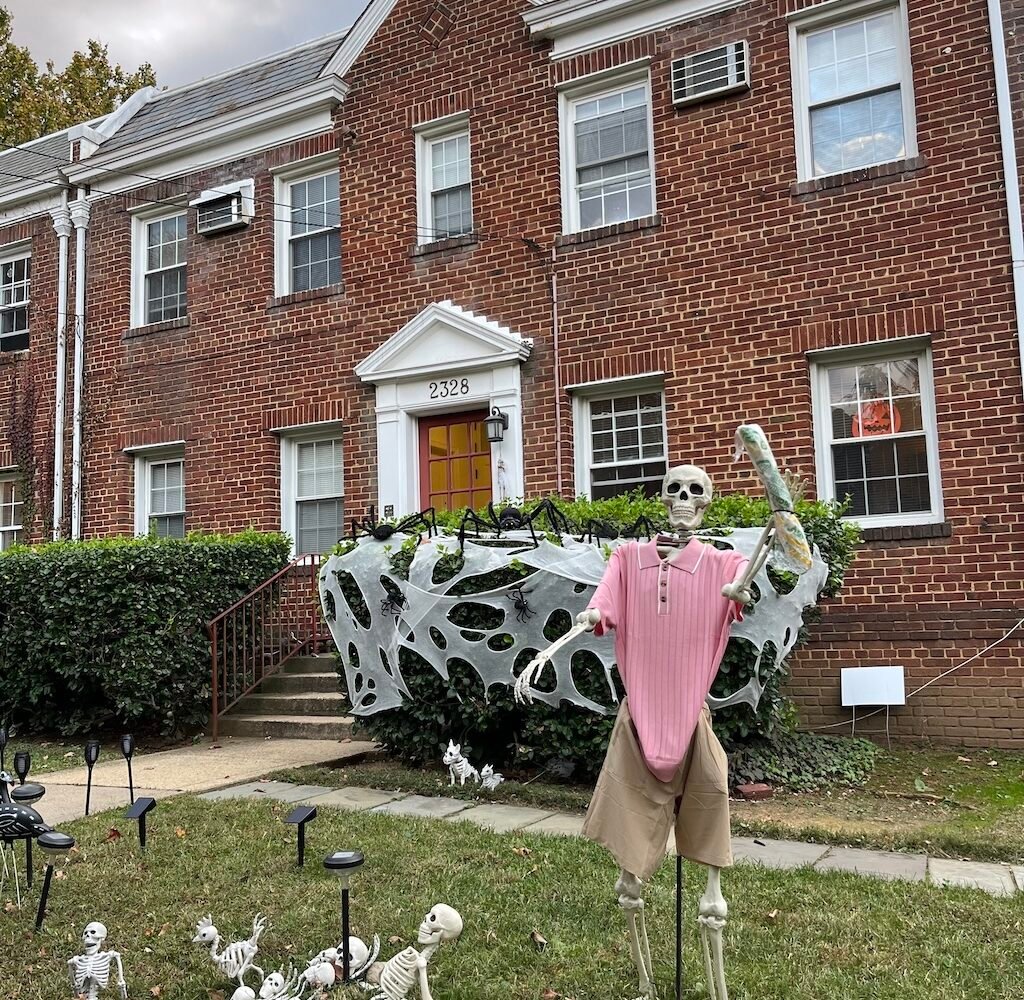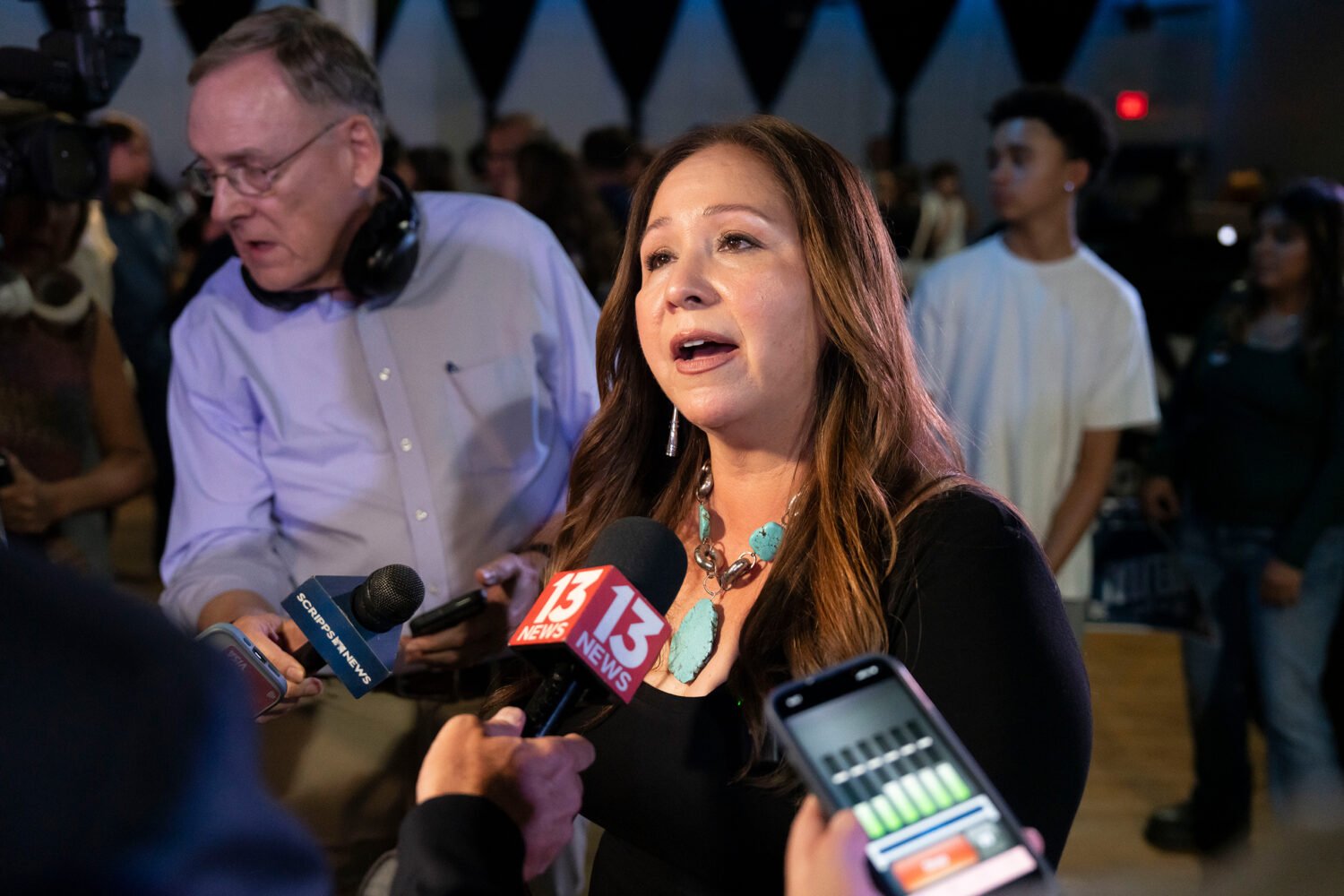Books aren’t the only thing that will be worth checking out when the Martin Luther King Jr. Memorial Library reopens on September 24. After three-and-a-half years of renovations—to the tune of $211 million—the crown jewel of the DC Public Library system will feature recording studios, rooftop gardens, and a kids’ slide. Before the pandemic, the library predicted up to one million visitors a year, says Richard Reyes-Gavilan, the executive director of DC Public Library.
On the outside, the domineering building designed by modernist architect Ludwig Mies van der Rohe retains the same facade, thanks to its historic landmark status. The lobby also includes the original yellow brick and a massive mural of Martin Luther King Jr.
But differentiating between the old Mies features and the new elements from Netherlands-based firm Mecanoo is as simple as following the building’s curves. The designers invoked contours and curvature to contrast Mies’ harsh lines, from the winding, spherical staircase to the bar code-like panels that tie together the library’s six floors.
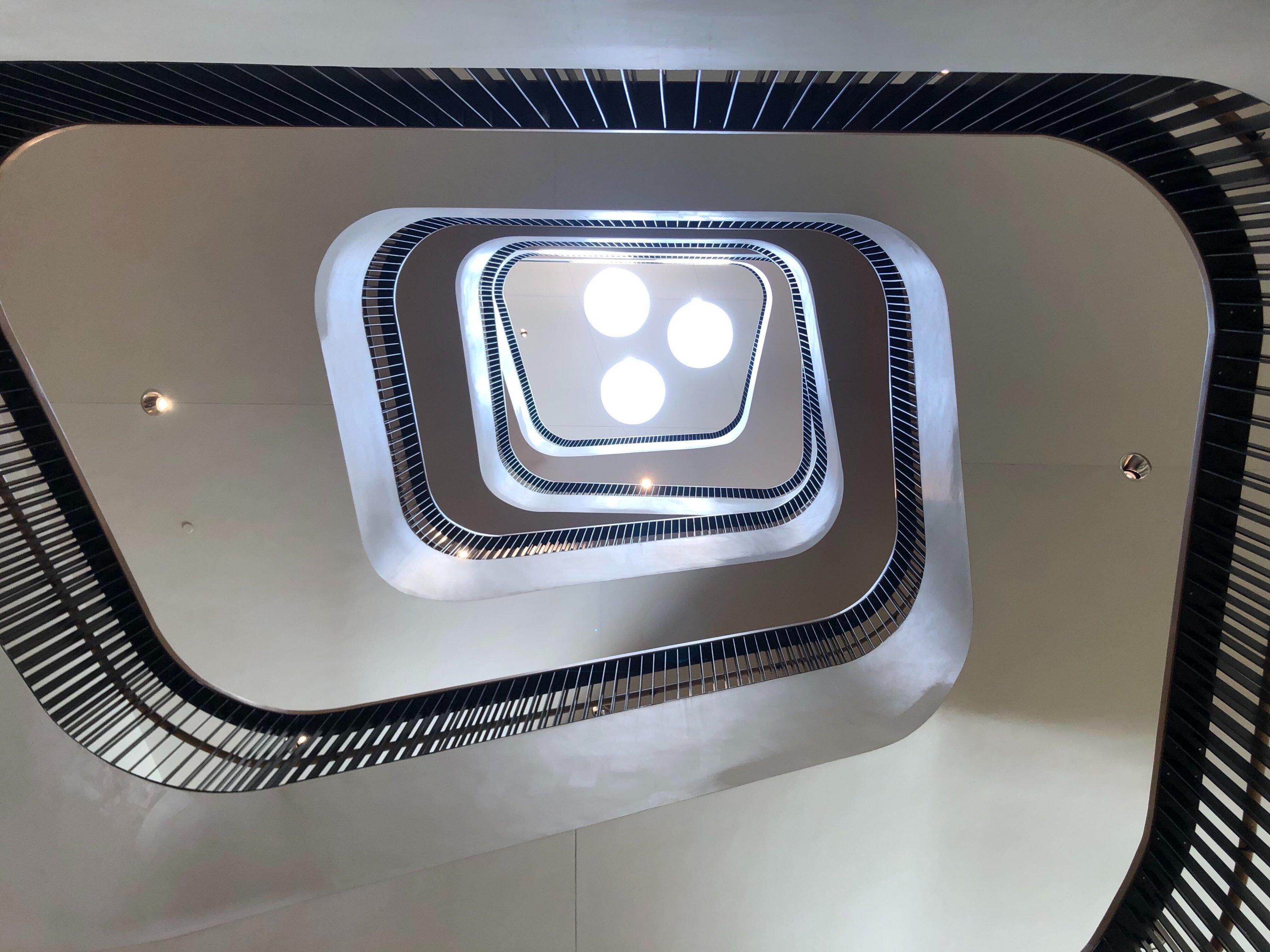
Library trustee Tony Williams reflects on his childhood visits to DC public libraries, and how the new design shapes the educational experience.
“It was this very serious space where you had to read a book and be quiet and it felt intimidating, particularly as a kid of color coming into that space,” says Williams. “The addition of the the wood and the curves make it welcoming. It changes the nature of how people will look at the library.”
Perhaps the most enticing welcome is the sleek kids’ slide visible from the street. More recess than study hall, the slide is wedged next to a winding staircase that draws the eyes upward.

“It really invites you to want to explore — I think that is probably the best thing any public building can do is make you make you want to explore what’s inside,” says Reyes-Gavilan.
Following that instinct of exploration all the way up brings visitors to the rooftop terrace, where islands of greenery extend into panoramic views of the Portrait Gallery and Capital One Arena.

Visitors can bring a book to the rooftop garden or charge a laptop in the outdoor outlets. While the demise of the Newseum eliminated one of the city’s party spots, the patio and adjoining event space are available to rent for private fêtes.

The top floor is also home to a 290-seat auditorium for large-scale programming. During the pandemic, the auditorium will be able to host 50 people in its plush red seats.

The building gets progressively louder as you walk down from the rooftop oasis. Far from the quiet reading rooms, the fabrication lab in the basement will be a humming hub for artists to play with 3-D printers, laser cutters, and woodworking tools. Two recording studios have gadgets like green screens, mixing devices, and music instruments to launch pro-quality projects. Patrons will be able to convert floppy disks and home film into digital archives in the neighboring memory lab with the aid of trained staff members.

Similar to the flow of volume moving down the staircase, rooms on the 10th Street side of the building will be quieter, growing more energetic as you approach 9th Street.
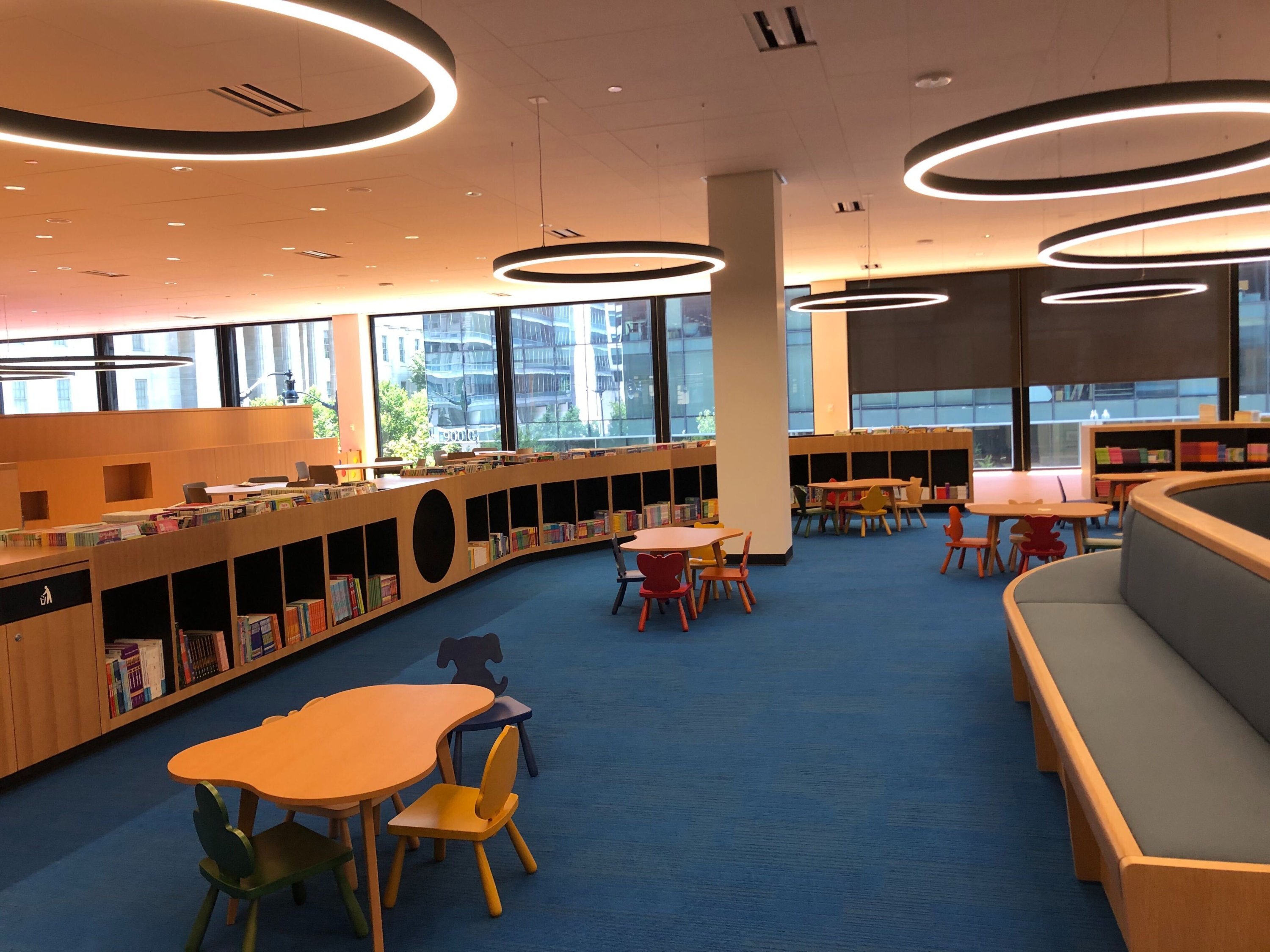
The bustling 9th Street side of the second floor houses a children’s reading room with nooks designed to meet readers at different developmental phases: The big kids get tall bookshelves and large tables, while the younger set are empowered to pick their own books at eye level. A sun-filled corner with amphitheater seating provides is a colorful den for daily storytimes.
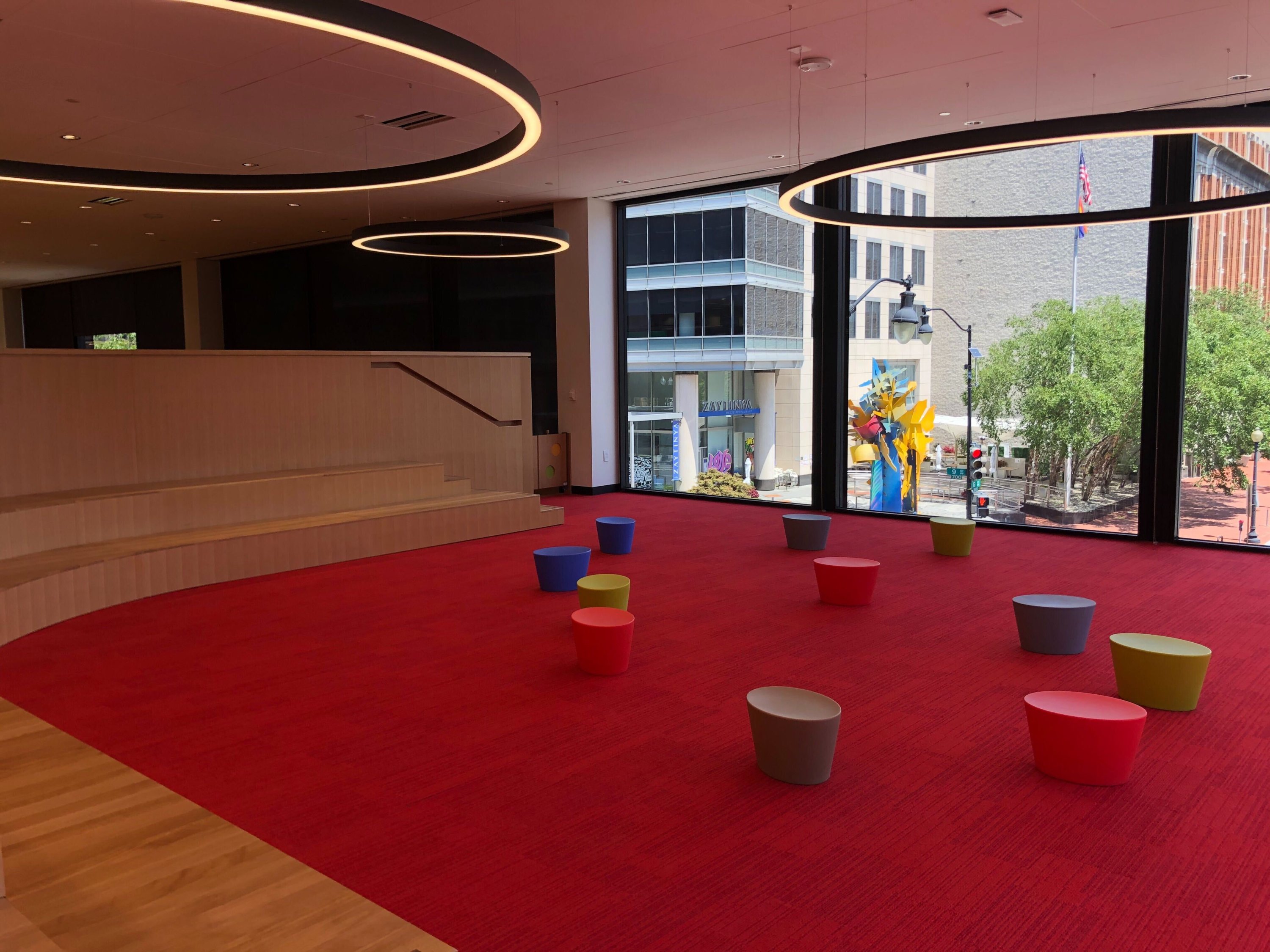
Teenagers get their own space, named after artist and educator Alma Thomas, with silent study rooms and couches to play retro video games.
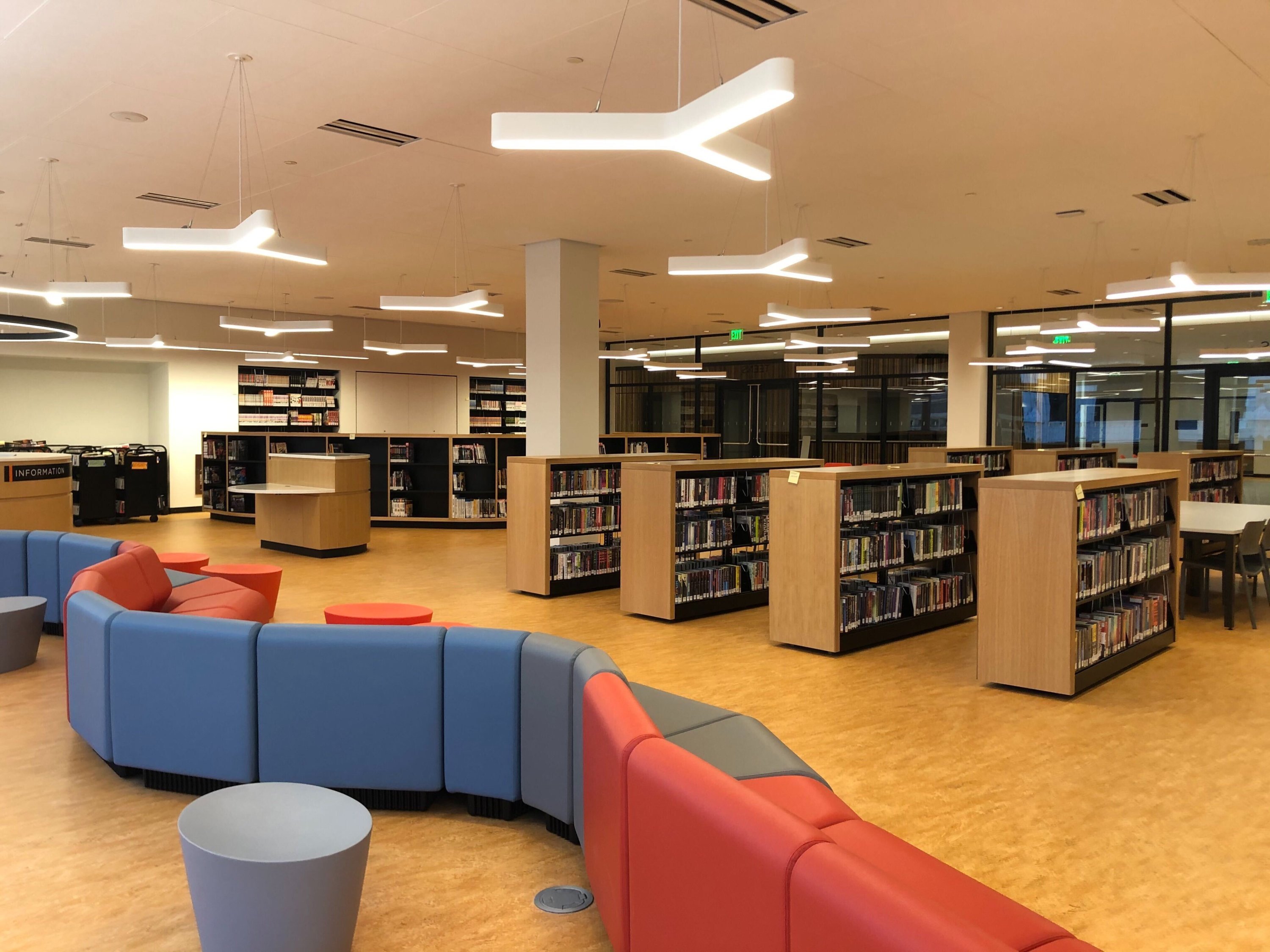
A more placid area of the same floor houses the accessibility center, with inclusive technology like text-to-speech JAWs readers.
As DCPL’s central hub, the library carved out spaces for community groups to meet in a place easily accessible from every Metro line. City departments and nonprofit organizations can rent private pods for months at a time to help visitors file for unemployment benefits or enroll in healthcare programs.
 “It’s not just about books. It’s about how do you engage, how do we up-skill and enable the public to fully embrace all of those different resources that the library can offer?” says Williams. “How can we open those different worlds?”
“It’s not just about books. It’s about how do you engage, how do we up-skill and enable the public to fully embrace all of those different resources that the library can offer?” says Williams. “How can we open those different worlds?”
While the second floor pods are specifically set aside for community engagement opportunities, conference rooms, meeting spots, and study spaces scattered around the library can be reserved by the public for free.

The library’s sense of whimsy doesn’t stop at the slide: The main reading room on the third floor sits under a colorful canopy of fine-metal crochet mobiles designed by artist Xenobia Bailey, the winner of a public art competition.
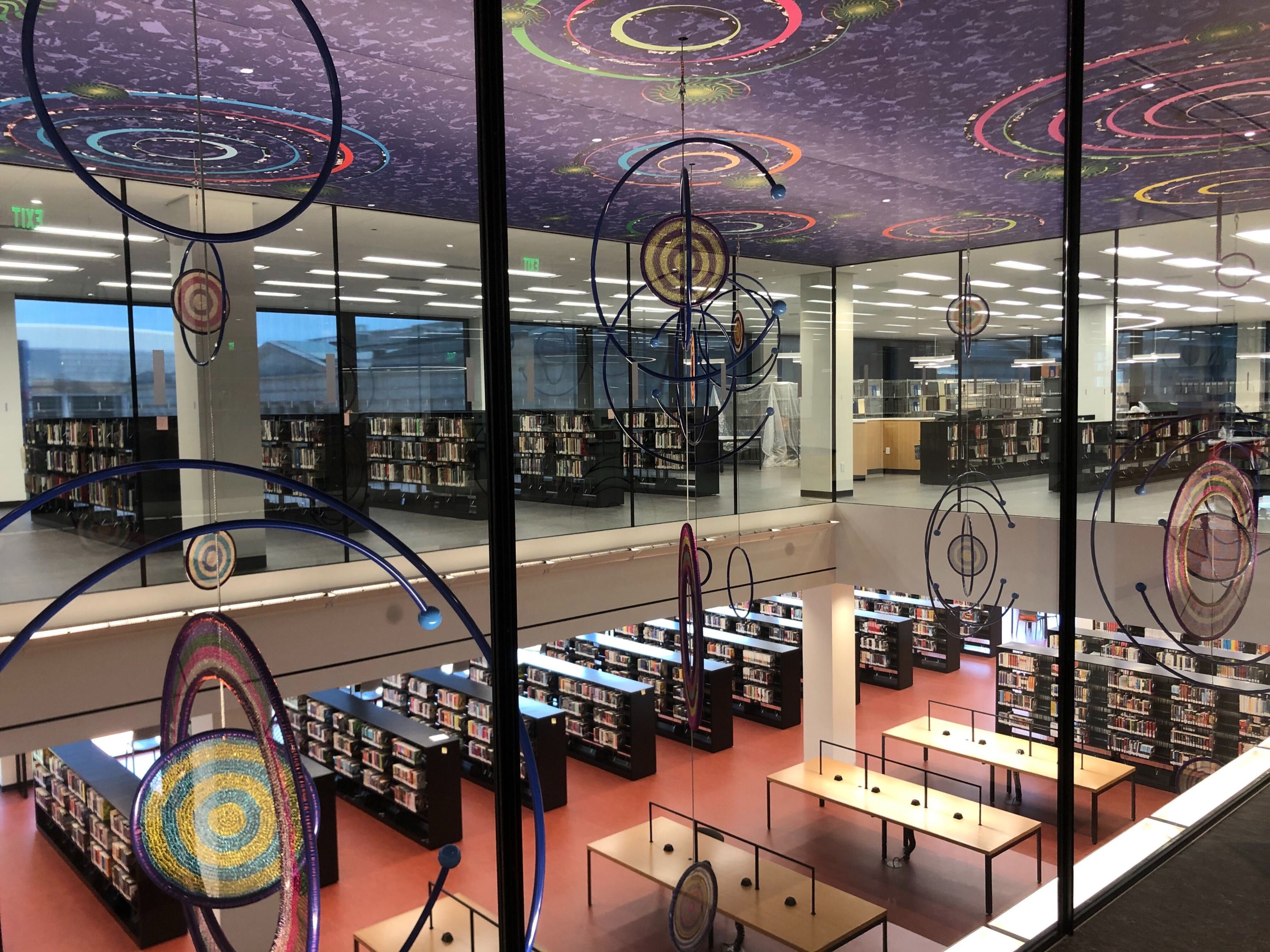
Parts of the kaleidoscopic installation are viewable from the fourth floor’s special collections, where scholars of local history can peruse throwback issues of the Washington Evening Star and other publications. A table carved in the District’s distinct shape is not just a piece of cool furniture: Depending on the month, the table will be overlaid with thematic information, acting as a dynamic map showing where pivotal points of history took place in our city.
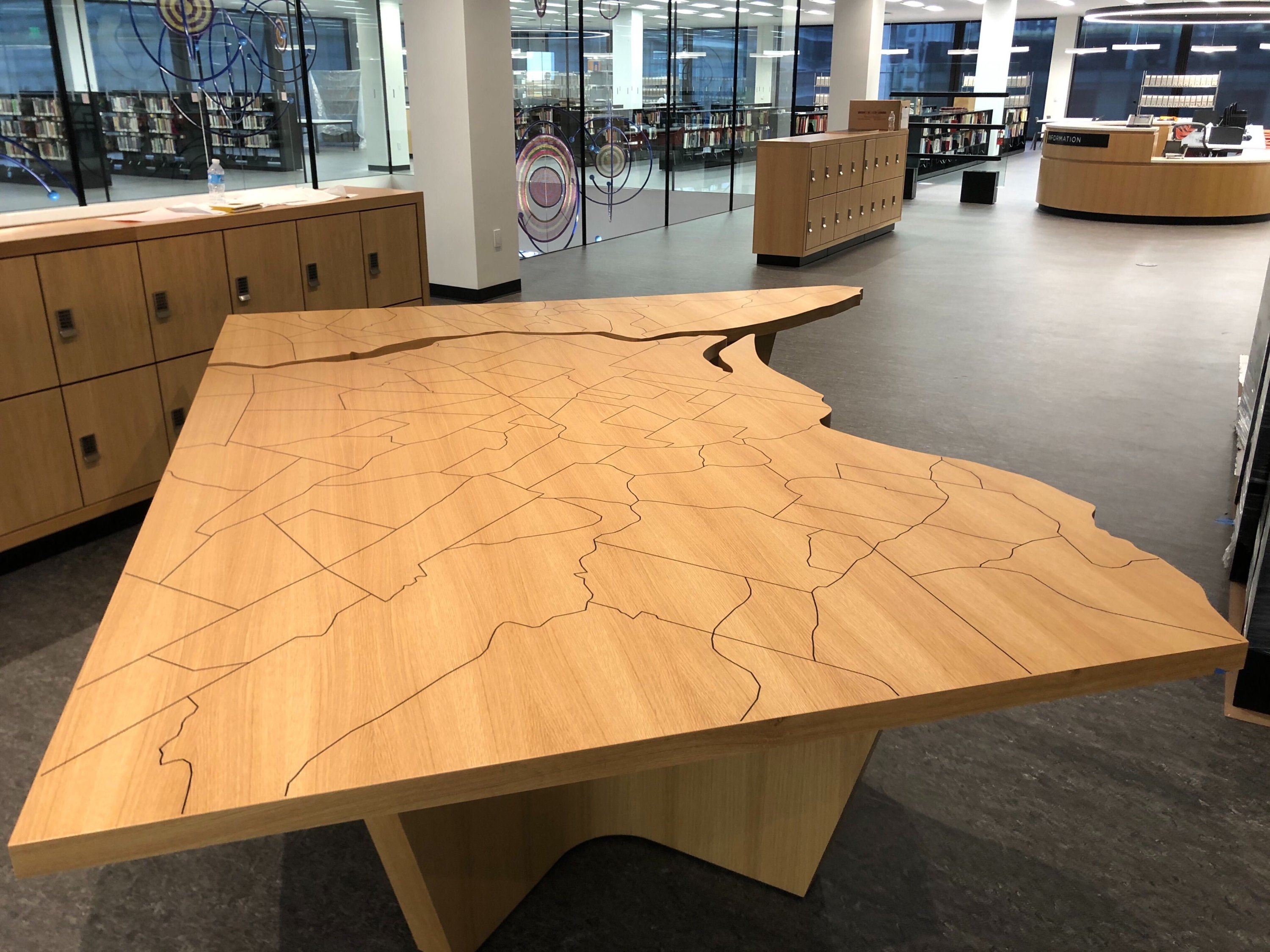
Although the library is reopening in a completely different context than when it first closed, the spirit of the space endures. Given the absence of in-person learning at DC Public Schools this fall, the library will play an even more important role in providing the community with an engaging place to learn.
“When you think about 21st-century libraries—and you think about the libraries that we have sprinkled all over the city—they’re fun, they’re delightful,” says Reyes-Gavilan. “People really just develop a relationship with these spaces because they’re really optimistic and joyful.”

